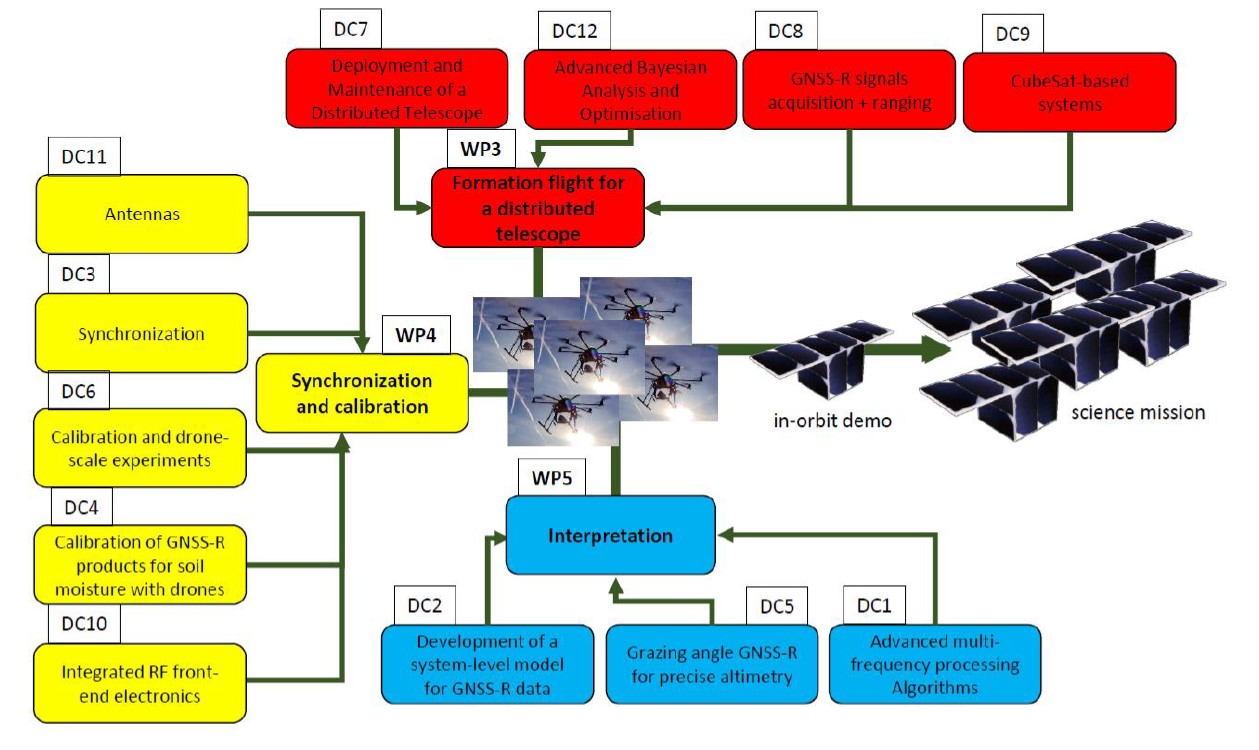Work Packages
Three technical workpackages are in charge of different aspects of the project.
Formation Flight and receivers hardware
This workpackage aims to design and validate the use of autonomous, solar-aerodynamic formation flight for remote-sensing GNSSR and related active components, including front-end RF and on-board computers. The optimality of non-regular satellite configurations will be studied as well.
Producing and calibrating GNSS-R products
This workpackage is dedicated to producing and calibrating GNSS-R products for different societal applications, including soil moisture mapping, flood detection, agricultural monitoring, ocean and polar products. It will be also responsible for RF pre-processing and data transfer, interferometric processing, model calibration, and data quality optimization
Interpretation
This workpackage is dedicated to developing new GNSS-R algorithms to improve retrieved environmental variables.
Doctoral Candidates
- DC1 - Multi-frequency GNSS-R signal processing
- DC2 - Investigation of advanced reflectometry instrumental concepts for swarms of nanosatellites
- DC3 - Synchronization of antenna arrays distributed over a swarm of CubeSats
- DC4 - Calibration of GNSS-R products for soil moisture using drone-borne radar
- DC5 - Grazing angle GNSS-R for precise altimetry
- DC6 - Calibration and drone-scale experiments
- DC7 - Deployment and control of a distributed telescope as a formation of nanosatellites
- DC8 - GNSS-R signals acquisition and ranging
- DC9 - Digital Twins of Large Spacecraft Formations
- DC10 - Frequency synchronization circuits in advanced CMOS technology for space-borne GNSS-R applications
- DC11 - Antenna technology
- DC12 - CubeSat advanced Bayesian analysis and optimisation
Individual project interconnections

Gender and diversity
The GLITTER DN complies with acts and directives at national, European, and international concerning gender and diversity aspects with the aim of eliminating inequalities and promoting equality between men and women and all diversities. Methods of gender analysis are incorporated into the project in order to identify the differences between the numbers and between the roles that women and men play, examining the possible biases or causes of gender inequalities.